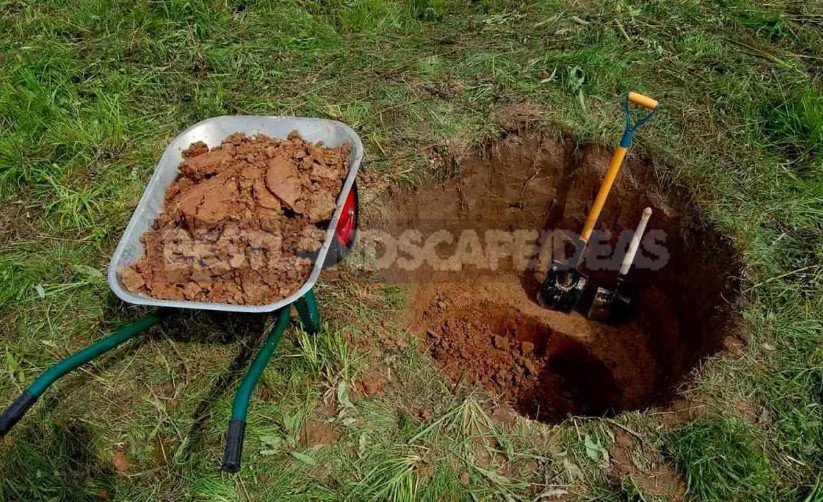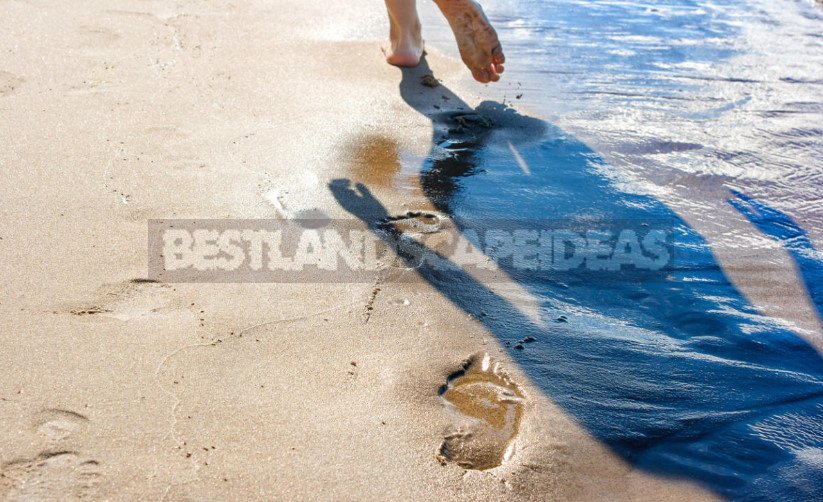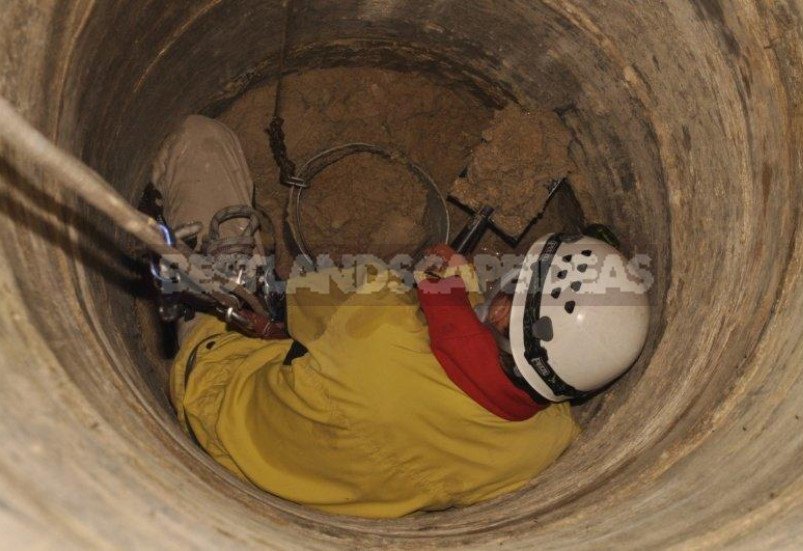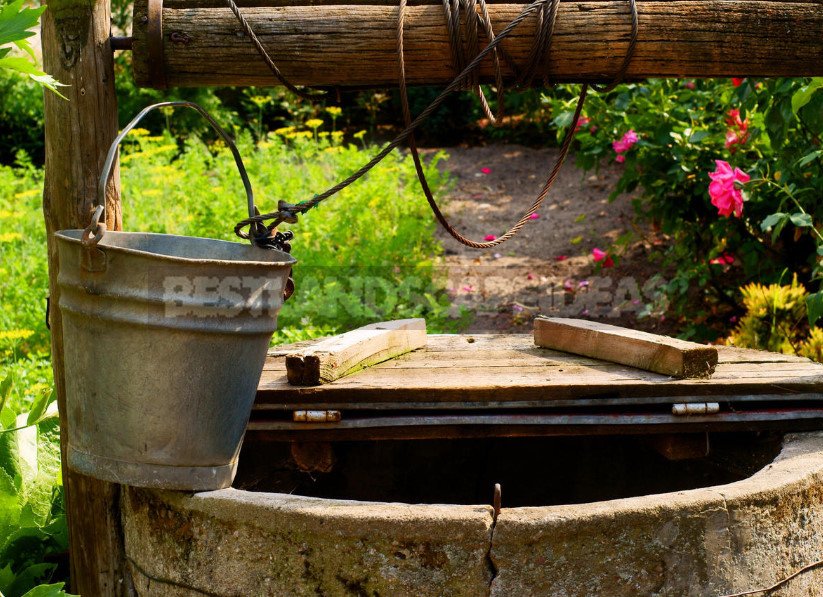The design of the well depends not so much on the skill of the builders as on luck. One example of bad luck is when a well got into quicksand.
What is quicksand, how to deal with them and whether it is necessary — this will be discussed in the publication.
Quicksand: Great and Terrible
It is about him that there are stories that are terrifying: how when digging a well, concrete rings are suddenly carried away in an unknown direction by an escaped stream of water and sand together with a poor digger. Indeed, a collapse may occur in the well shaft and a person will suffer, or even die, crushed by the soil and shifted rings. And including the cause of deformation of the shaft may be quicksand.
However, it is unlikely that in the event of such an accident, the consequences will be like in a high—budget Hollywood movie – a disaster with special effects – with concrete rings carried away by a turbulent flow. Maybe only if you are “lucky” to get into quicksand and break through the well of a stormy underground river. But quicksand is really dangerous and can cause a lot of trouble.
What is quicksand
Quicksand is a moisture-saturated porous, loose soil consisting of unbound particles. Due to the large amount of water, such soil acquires the properties of a liquid — it begins to flow.
Quicksand is under pressure in a sealed cavity in the thickness of the soil. When this cavity is opened, for example, by a pit or a borehole, floating masses are set in motion by this pressure, and masses of sand and water break through into the resulting mine.

Most often such formations are found on swampy soils or in floodplains of rivers. The thickness of the quicksand layer and its dimensions may be different. Externally, on the surface of the earth, quicksand does not manifest itself in any way, so it is impossible to predict their location. Nor is it possible to take measures to avoid meeting them. Experts distinguish between true and false quicksand.
True quicksand
In its composition, in addition to pulverized sand, there are hydrophilic clay or silt particles that envelop larger grains of sand, acting as a lubricant. Even with a small pressure, the mass of this sandy loam comes into a mobile state.
If, while digging a well, you stumbled upon the fact that these are real quicksand, you are really “lucky”. Real quicksand practically does not give water — they have a low filtration rate. Therefore, it will not be possible to build a well in such a place: instead of water, it will have a viscous clay-sand solution.
False quicksand
Fortunately, real quicksand is not so common. Usually, when digging a well, they encounter pseudo-quicksand. There are no colloidal particles in the composition of false floats – this is a soil consisting of fine sand and a large amount of water.

To imagine how quicksand behaves, remember the sand at the water’s edge. In the form of a solid and almost dry, but it is worth approaching, as it becomes loose and water appears.
In the case of false quicksand, unlike the true one, significant hydraulic pressure must be applied at the depth of movement. If false quicksand gets in the way of the mine, it will not interfere with the device of the well. Moreover, wells in quicksand are distinguished by a special abundance of water compared to conventional ones. However, this will complicate the life of both the diggers and the owner of the well during its operation.
How to deal with the swimmer
It is better to entrust the well to specialists who have experience working with a swimmer and can quickly make the right decision. If you decide to dig yourself, you must follow the safety rules:
- the walls of the well must be reinforced, that is, it is impossible to arrange a well on complex loose soils without rings;
- there is a partner at the top, and the digger should have a rope so that, if necessary, it is possible to immediately lift a person: quicksand can suddenly move;
- if there is reason to believe that the quicksand layer is of small thickness, and it is decided to pass it, then you need to work as quickly as possible, and if it is impossible to pass, stop and make the water intake part of the quicksand.

In the old days, for the passage of quicksand, in addition to the speed of work, strengthening walls and the device of a tunneling shield blocking quicksand and slowing down the flow of water with sand into the well, water-saturated soil was “tied”, adding a substance that absorbs water. If false quicksand takes moisture, the sand becomes compacted and loses its quicksand qualities.
To do this, for example, several bags of flour were poured into the well and mixed with water-sand slurry. After a while, the flour absorbed the water, and it was possible to continue working.
Another option is to dig a well in winter.
Well on the quicksand
As mentioned above, such wells usually have a large flow rate (i.e. the water flow rate in them is high), and sand is an excellent filter. You just need to accept the inevitable floating sand as one of the features of your well and deal with it properly.
Operation
Do not try to pump sand slurry from the well: the more you pump, the more it comes in. And this is fraught not only with a waste of energy. Sand entering the well is carried away by water from the outer walls of the mine, and cavities are formed there.
And it is here that we are talking about the development of the scenario of disaster films — the possible shift of the ground and the displacement of the rings with all the sad consequences. In addition, a surface layer of soil may settle in a cavity formed in the soil. And if there is a structure, then this will probably entail the weakening and even destruction of its foundation and the building itself.

Some subsidence is inevitable – this is normal. It is necessary to be patient and wait until the soil around the new well is compacted and the well-aquifer bundle comes into balance. Only after that, you can arrange a blind area around the head of the well. The process of compaction and subsidence of the soil can take several years.
As soon as the situation stabilizes and the soil is no longer actively entering the mine, you can try to remove the deposited sand until the quicksand begins to manifest itself again. And then you have to wait again until the system calms down. You may have to repeat the procedure again.
It is impossible to use a submersible vibration pump in a well on quicksand, as it will lift the sand at the bottom with its work. It is necessary to install a pump with a surface water intake.
It is also impossible to pump water in one gulp (at the same time), there should always be at least a third of the usual volume in the well, and preferably at least half. The intake of a large amount of water can “wake up” quicksand. It is better to organize a storage tank on the surface, the volume of which clearly exceeds the daily water consumption, and install a low-power pump that fills it. And the entire water supply system of the house is diluted from the storage tank.
And most importantly, you should not use shields and arrange a filter in an attempt to keep the quicksand.


















